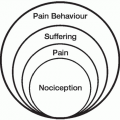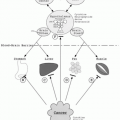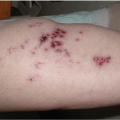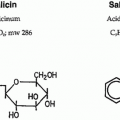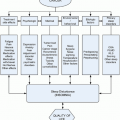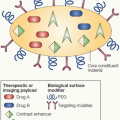As noted, prescription drug abuse is increasing throughout the United States. Much of the information available on prescription drug abuse is not directly related to cancer patients with pain. However, as increasing numbers of patients survive cancer or have longer survival times than previously, issues related to long-term opioid use in the nonmalignant chronic pain patient may become applicable to the long-term cancer pain survivor. Joranson et al.
4 evaluated the proportion of drug abuse related to opioids use and the trends in medical use and abuse of five opioids (fentanyl, hydromorphone, meperidine, morphine, and oxycodone) between 1990 and 1996. The authors concluded that a trend of increasing medical use of opioids to treat pain did not appear to contribute to increases in opioid abuse. In a reassessment of this situation during the period of 1997 to 2002, the same group noted that the increase in medical use of opioids was a growing public health problem and should be addressed by identifying the causes and sources of diversion, without interfering with legitimate medical practice and patient care.
5The consumption of therapeutic opioids in the United States increased from 74 mg per person in 1997 to 329 mg per person in 2006, a 347% increase. During the same period, the therapeutic use of methadone increased by 1129% mg/person and oxycodone by 899% mg/person.
10 Americans, constituting only 4.6% of the world’s population, have been consuming 80% of the global opioid supply, and 99% of the global hydrocodone supply, as well as two thirds of the world’s illegal drugs.
10 Retail sales of opioid medications have increased from a total in 1997 of 50.7 million grams of commonly utilized opioids (including methadone, oxycodone, fentanyl base, hydromorphone, hydrocodone, morphine, meperidine, and codeine) to 115.3 million grams in 2006, an overall increase of 127% with increases ranging from 196% for morphine, 244% for hydrocodone, 274% for hydromorphone, 479% for fentanyl base, 732% for oxycodone, to 1177% for methadone.
10In 2001, the Substance Abuse and Mental Health Services Administration (SAMHSA) estimated that over 11 million people have taken prescription-type drugs for nonmedical uses at least once in their lifetime, almost four times greater than in the 1980s. This rise in prescription nonmedical use includes teenagers and young adults.
11 Various programs collect data on prescription opioid abuse and misuse, including the National Survey on Drug Use and Health (NSDUH) and the Drug Abuse Warning Network (DAWN). DAWN, initiated in 1988, is a national data system that collects information about ED visits that are related to substance abuse. The number of mentions of psychotropic drugs during a drug-related visit is the key endpoint for this system. DAWN defines drug abuse as “nonmedical use of a substance for psychic effect, dependence, suicide attempt/gesture, or the use of prescription drugs in a manner that is inconsistent with the accepted medical practice.”
There is a complex relationship between the therapeutic use of opioids and other psychotherapeutics and the consequences of escalating care, abuse, and nonmedical use of these substances. Superimposed on this relationship is the influence of illegal recreational substance use. Although the prevention of drug abuse is an important societal goal, it should not override and hinder patients’ ability to receive appropriate health care. For many patients, opioids, when used appropriately, are the most effective way to treat pain, and often the only treatment option that provides significant relief. When deciding on opioid prescription, physicians should decide if opioids are indicated in the management of the patient’s pain complaint, as not all pain complaints can be treated effectively with opioids. Physicians should also ask patients about their previous and current histories of alcohol and other drug use. Attention should also be paid to a family history of addiction. Patients with histories of substance use, mental health problems, or both should receive
special attention and comanagement from pain management and/or addiction specialists when possible. Appropriate treatment of coexisting mental health disorders should be considered part of successful pain management.
Oxycodone Abuse
Annual consumption of oxycodone has increased 42-fold in the United Kingdom and threefold in the United States from 1999 to 2003.
12 Oxycodone abuse has been a continuing problem in the United States since the early 1960s. The large amount of oxycodone (10 to 160 mg) present in controlled release formulations (OxyContin) renders these products highly attractive to opioid abusers and doctorshoppers. Oxycodone appears to be abused for its euphoric effects. Zacny and Gutierrez
13 characterized the subjective and psychomotor effects of oxycodone in non drug-abusing volunteers and noted that the subjective effects were dose related. Although oxycodone produced abuse liability-related subjective effects, it also produced unpleasant effects. Peak liking and drugwanting ratings were increased by all doses of oxycodone, and trough ratings of liking (dislike) were lower in the 20-mg and 30-mg oxycodone conditions. Cognitive and psychomotor impairment were obtained with the higher doses of oxycodone.
OxyContin is abused either as intact tablets or by crushing or chewing the tablet and then swallowing, snorting or injecting. Cicero et al.
1 noted that prescription drug abuse was a prevalent problem in the United States between 2002 and 2004, that OxyContin was the prevalent prescription opioid abused, and that most OxyContin abusers (> 87%) had extensive current and past histories of substance abuse. There is some suggestion that the marketing of OxyContin contributed to its abuse by minimizing its abuse potential to prescribing physicians.
Products containing oxycodone in combination with acetaminophen or aspirin are also abused orally. According to the Florida Department of Law Enforcement, oxycodone was found in 5.6% (716) of the total drug-related deaths in Florida in 2005. Based on the toxicology reports, oxycodone was cited as a causative drug in 340 deaths. The manner of oxycodone deaths cited included accidental (65%), suicide (16%), natural (13%), and undetermined (4%). Abuse of oxycodone is most frequently seen in conjunction with the abuse of other drugs, although fatalities have been reported with oxycodone alone.
14 Although OxyContin tablets are safe and effective when taken intact and as recommended by the manufacturer for the treatment of moderate to severe, ongoing pain, abusers have discovered that crushing the tablets defeats the controlled-release mechanism and makes much of the oxycodone immediately available, which can then be ingested or administered by intranasal or intravenous routes, sometimes with fatal outcome. When combined with opioids, self-administration of other depressant drugs can substantially increase the likelihood of a fatal outcome.
15 The 2001 DAWN mortality report noted that 89% of deaths involving heroin/morphine also had mentions of at least one other drug. Similar findings were also reported for other opioid analgesics such as methadone, codeine, oxycodone, and hydrocodone. In 2001 alone, multidrug episodes were reported 56% of the time.
16 Between 1997 and 2001, oxycodone mentions increased 276%. Cone et al.
14 reported on the role of oxycodone in 1,243 mortality cases collected from an oxycodone postmortem database from 23 states. Only 30 (3.3%) of the drug abuse cases involved oxycodone as the single reported chemical entity; of these, 12 cases had OxyContin identified as a source of oxycodone. Of the 919 drug abuse cases, the vast majority (N = 889, 97%) were multiple drug abuse deaths in which there was at least one other plausible contributory drug in addition to oxycodone. The most prevalent drug combinations were oxycodone in combination with benzodiazepines, alcohol, cocaine, other narcotics, marijuana, or antidepressants.
Certain sectors of the population seem to be especially vulnerable to the nonmedical use of drugs, including adolescents, college students, individuals with known psychiatric disorders, the elderly, and patients with undertreated pain. Reasons for use include inadvertent use, selfmedication, “experimentation,” and abuse or dependence. Some authors suggest that medical prescription is a common source17 and others suggest that the main sources are illicit and include family, friends, and others.
18 The current evidence suggests that although oxycodone is abused for nonmedical reasons, it does not appear to have properties uniquely different from other opioids to merit additional concern about its abuse potential.
Methadone Maintenance and Opioid Detoxification
Opioid addiction is a chronic relapsing disorder that is associated with significant social and health consequences, including high levels of unemployment, criminal activity, reliance on social services, blood-borne infections, and a high prevalence of concurrent psychiatric disorders.
19 Treatment is aimed at a reduction in risks associated with substance abuse including relapses to opioid and polysubstance use and promoting psychosocial adjustment.
20 Chronic heroin abusers suffer endogenous opioid deficiency because of down-regulation of opioid production, which creates an overwhelming craving.
21 As a replacement option, methadone is intended to eliminate the euphoric effect of heroin, the abstinence symptoms associated with withdrawal, and cravings associated with chronic use of heroin.
Methadone maintenance treatment is a long-term opioid replacement therapy introduced in 1965 and is considered an effective and accepted intervention for opioid dependence.
22 Buprenorphine is also an effective intervention for use in the maintenance treatment of heroin dependence, but may be less effective than methadone delivered at adequate dosages.
23 Methadone is an orally effective, long acting medication and should be compatible with normal performance in vocational activities.
24 Methadone maintenance is used in the short term for detoxification purposes and also as long-term treatment which allows complete social and personal rehabilitation and prevents the health damages related to drug use.
25 Despite clinical effectiveness, patient satisfaction with treatment varies.
26 When providing opioids for treatment of drug addiction, monitoring is necessary to track individual patient
progress and to minimize the potential public health impact of diverted drugs. Maintenance treatment typically takes place in highly structured and regulated specialty programs. Once a therapeutic dose is achieved, patients frequently can be maintained for many years with the same dose.
Methadone dosages ranging from 60 to 100 mg/day are more effective than lower dosages in retaining patients and in reducing use of heroin and cocaine during treatment.
22 Doses as low as 20 mg may improve treatment retention, but higher doses are often necessary to suppress illicit drug use.
27 The minimal effective dose is usually 50 mg, but some individuals need much larger doses.
28,
29 Opioid dependent patients with Axis I psychiatric comorbidity may need significantly higher methadone doses. Treatment is usually initiated with 25 to 30 mg of methadone once daily. The dose is gradually titrated in 5- to 10-mg increments per day to a dose range of 60 to 120 mg, which usually provides relief from abstinence symptoms, generally without perceptible sedation effects. Cancer pain specialists are reminded that treating drug addiction requires a federal license and is not legal for physicians without this endorsement.
Tapering off opioids may also be considered in addicted patients. In opioid detoxification programs, a patient is taken off the drug either abruptly or gradually in order to eliminate physical dependence with the minimum of discomfort from withdrawal symptoms. Detoxification has repeatedly shown substantially poorer outcomes than methadone maintenance.
30 Detoxification by itself is not an effective treatment for dependence.
31 In a review of ultra-rapid detoxification for opioids, the limited efficacy of this approach even at 3-month follow-up was found to contrast strongly with the long-term efficacy of methadone stabilization treatment.
32 In a study by Sees et al.,
33 patients who were stable while receiving methadone maintenance had significant declines in heroin use, needlerelated HIV risk behaviors, and drug-related crime. However, methadone stabilization is not the total solution to the problem of opioid dependence and addiction. Cocaine use, sex-related HIV risk behaviors, employment problems, and family problems persisted, and more than 50% of patients in both groups used heroin at least once during any given month of treatment.
Although untreated alcohol or benzodiazepine withdrawal is potentially more dangerous, opioid withdrawal causes intensely disturbing symptoms. Withdrawal symptoms begin 3 to 6 hours after the last use of heroin, but they may not begin for a number of days after abrupt discontinuation of methadone. Following cessation of a short half-life opioid, symptoms reach peak intensity within 2 to 4 days, with most of the obvious physical withdrawal signs no longer observable after 7 to 14 days. Opioid withdrawal is rarely life-threatening or associated with significant aberrations of mental state. However, completion of withdrawal is difficult for most people. Symptoms include GI tract distress (diarrhea and cramping), marked anxiety, irritability, insomnia, pathognomonic skin piloerection, and an influenza-like syndrome characterized by rhinorrhea, lacrimation, and myalgias. This syndrome may last 5 to 10 days. In addition, a protracted abstinence phase may last for months and is characterized by asthenia, depression, and hypotension.
34Methadone in tapering doses can be used for the management of opioid withdrawal.
35 The severity of opiate withdrawal symptoms is related to the pretreatment opioid dose.
36 Methadone can be tapered by 10% to 20% per day for inpatients after an initial day or two of stabilization. For outpatients, the dose is tapered 5% to 10% per week. Clonidine may also be considered for non-opioid-based detoxification. One mechanism underlying opioid withdrawal is noradrenergic hyperactivity. Use of α-2 adrenergic agonists acting centrally can moderate the symptoms of noradrenergic hyperactivity. Clonidine in initial doses of 0.1 to 0.2 mg every 4 hours with careful monitoring of blood pressure eliminates most commonly reported withdrawal symptoms. Some symptoms, such as anxiety and myalgias, are less responsive to clonidine and may require the concomitant use of benzodiazepines and/or nonsteroidal anti-inflammatory drugs (NSAIDs). Clonidine may shorten the detoxification period to 1 to 2 weeks.
37 Adverse effects are most severe for the few days of peak withdrawal when maximal doses of clonidine are administered. Aside from hypotension, the adverse effects more commonly associated with clonidine are drowsiness, fatigue, lethargy and dry mouth. Clinically, hypotension is the most significant adverse effect and can be adequately managed by limiting doses and reducing the dose of medication according to blood pressure changes.
38Ultra-rapid detoxification is a variant that is performed with the patient under general anesthesia during 24 hours. Because the patient is anesthetized during the acute phase of withdrawal, he or she does not consciously experience the unpleasant acute opioid withdrawal syndrome. Most of the rapid protocols use clonidine along with an opioid antagonist, as well as adjuvant benzodiazepines and antiemetics to treat the withdrawal syndrome. However, the effectiveness and safety of anesthesia-assisted detoxification have been questioned. Although detoxification under anesthesia accelerates the detoxification procedure, there is a lack of randomized clinical trials evaluating its effectiveness compared to traditional detoxification procedures and a lack of data on long-term abstinence.
39 A systematic review noted a lack of evidence to support this approach.
32 Safety concerns have also been raised.
40,
41 Naltrexone may also be used in the pharmacological treatment of relapse prevention and may be helpful especially in highly motivated patients.
42 Unfortunately, this method has not been validated for different patient populations.
43 The setting for detoxification is also debatable. Unfortunately, there is very limited data to guide the clinician about the outcomes or cost-effectiveness of inpatient or outpatient approaches to opioid detoxification.
44




